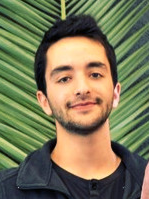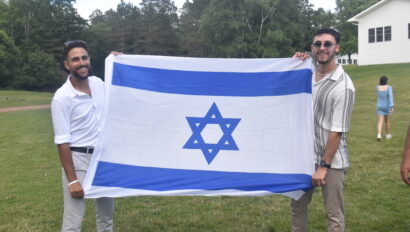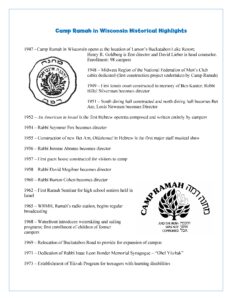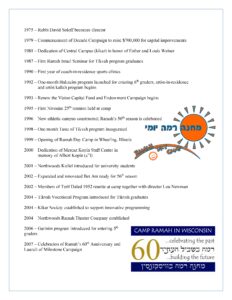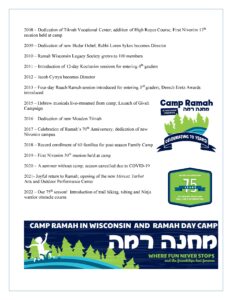Please enjoy a d’var Torah this week from Jonathan Schrag, who will be Rosh Bogrim (entering 9th grade) this summer. Jonathan spent several summers as a madrich (counselor) and was a camper at Ramah in Wisconsin for seven summers. He also worked at the Ramah Day Camp in Wheeling for a summer. He will be graduating this spring from Knox College in Illinois after studying Political Science, History and Educational Policy Studies.
Ramah as a Beit Mikdash: Reflections on Parashat Vayikra
by Jonathan Schrag
This week’s parashah, Vayikra, picks up just after the construction of the tabernacle last week and begins with God telling Moses to explain the process B’nai Yisrael (the Israelites) will need to follow when offering a sacrifice to God.
:וְשָׁחַ֛ט אֶת־בֶּ֥ן הַבָּקָ֖ר לִפְנֵ֣י יְהֹוָ֑ה וְ֠הִקְרִ֠יבוּ בְּנֵ֨י אַֽהֲרֹ֤ן הַכֹּֽהֲנִים֙ אֶת־הַדָּ֔ם וְזָֽרְק֨וּ אֶת־הַדָּ֤ם עַל־הַמִּזְבֵּ֨חַ֙ סָבִ֔יב אֲשֶׁר־פֶּ֖תַח אֹ֥הֶל מוֹעֵֽד
And he shall slaughter the young bull before God; and Aaron’s descendants, the Kohanim, shall bring the blood; and throw the blood upon and around the altar, which is at the entrance of the Tent of Meeting. (Vayikra 1:5)
In the 18th century, Rabbi Yaakov Culi theorized that the purpose of sacrifice was not to sustain or please God but rather to drive us to analyze our own misbehavior, ultimately leading to repentance.
The 20th century scholar and teacher Nehama Leibowitz adds to Culi’s idea, arguing that sacrifices were the way for a member of B’nai Yisrael to reconcile and build a strong relationship with God, both as an individual and as a community. Following the destruction of the Temple, however, the Rabbis were forced to find a new way for Jews to connect with God, as the practice of ritual sacrifice would no longer be possible. It was decided that sacrifices would be replaced with prayer, Torah study, and tzedakah, three pillars that remain central to Judaism today.
These three practices require extraordinary commitment and discipline and can be difficult to maintain in certain settings. At camp, however, we are surrounded by friends and peers who are also striving to uphold Jewish traditions, making these three tenets more accessible. Camp is where you can try new things, whether that means leading t’fillot (services) for the first time, learning about a new art discipline, or trying a new sport, and then carry your practices back home once the summer ends.
Rabbis Debra Orenstein and Jane Rachel Litman wrote in their book, Lifecycles: Jewish Women on Biblical Themes in Contemporary Life that without a central Beit Mikdash (Temple), every home became a miniature version for the family to keep practicing together. At camp, your home is your cabin and your eidah (age group) is your family, and because of the intentional community at camp, the entire space can be your Beit Mikdash.
There is no shortage of potentially spiritual moments at camp: Friday night services as an entire community next to the lake, stargazing on your cabin’s camping trip, performing your eidah play in front of the entire community, and countless others. The question is how we approach these moments, and how we intend to return home carrying our memories and new traditions with us.
So although Vayikra provides instructions for a practice we no longer carry out, it teaches us the importance of tending to our relationship with God, as well as the significance of creating a Beit Mikdash within our own homes, whether we’re at camp or back in the city with our families. With camp less than 100 days away, let’s use this Shabbat as an opportunity to reflect on what makes our Beit Mikdash special, both at home and at camp.
